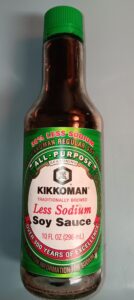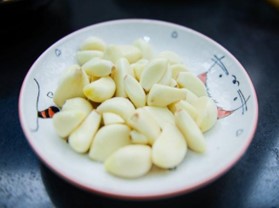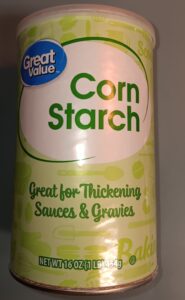
Gluten Free Teriyaki Sauce – DIY
Introduction
Hello, Japanese food enthusiasts! For over a decade, I’ve had the pleasure of exploring the intricate and diverse world of Japanese cuisine including how to make flavorful gluten free teriyaki sauce at home.
From the streets of Tokyo to the countryside, I’ve encountered flavors and techniques that have left an indelible mark on my culinary journey.
Today, I invite you to embark on a flavorful adventure as we delve into the art of crafting your very own teriyaki sauce from scratch.
Japanese cuisine is celebrated for its balance of flavors, artful presentation, and respect for tradition. It’s not just about sushi and sashimi; it’s a symphony of umami-rich ingredients, precise culinary methods, and, of course, sauces that elevate simple dishes to extraordinary heights.
In this post, I’ll focus on a beloved teriyaki sauce.
Teriyaki is a cooking method that involves grilling or broiling meat or fish before gilding it with a decadent, sweet-savory sauce. It is now widely associated with Japanese cuisine. The word “teriyaki” itself is a fusion of two Japanese words, “teri” meaning luster or shine and “yaki” meaning grilled or broiled. A true representation of Japanese culinary artistry, the sauce’s glossy finish brings out the natural beauty of the ingredients.

But here’s the twist. We’re not just making any teriyaki sauce; we’re crafting a gluten-free version. Over the years, I’ve learned the significance of accommodating different dietary needs without compromising on flavor.
So, whether you have celiac disease, gluten sensitivity, or simply want to savor the pure essence of teriyaki, you’ve come to the right place. We will learn the components, procedures, and love that go into creating this exquisite sauce at home in this gluten-free teriyaki sauce DIY adventure.
So put on your apron, sharpen your knives, and get ready to take a trip through the magical world of teriyaki sauce with your taste buds. Let us get our hands dirty and discover how to make a delicious, gluten-free teriyaki masterpiece!
What is Teriyaki Sauce?
Teriyaki sauce, a beloved gem of Japanese cuisine, is a delectable, sweet-savory concoction that holds a special place in the hearts of food enthusiasts worldwide. To truly appreciate the art of crafting your gluten-free teriyaki sauce, it’s essential to understand the essence of teriyaki itself.
Teriyaki, pronounced “teh-ree-yah-kee,” is more than just a flavor; it’s a cooking technique and a testament to the delicate balance of tastes that Japanese cuisine is celebrated for. The term “teriyaki” is derived from two Japanese words: “teri,” meaning luster or shine, and “yaki,” meaning grilled or broiled. This combination perfectly encapsulates the essence of the teriyaki method, where ingredients are beautifully glazed and glisten with a rich, caramelized finish.
At its core, teriyaki sauce consists of four primary components:
1. Soy Sauce
The foundation of teriyaki sauce, soy sauce provides the savory umami flavor. For our gluten-free version, we’ll use tamari or a gluten-free soy sauce to ensure it’s safe for those with gluten sensitivities.
2. Sweetener
The sweet element in teriyaki sauce comes from ingredients like sugar, honey, or mirin, a sweet rice wine. We’ll explore gluten-free sweetening options that maintain the perfect balance of flavors.
3. Sake
This Japanese rice wine adds depth and complexity to the sauce, balancing the sweetness with a touch of acidity.
4. Mirin
A sweet rice wine that contributes to the sauce’s glossy finish and subtle sweetness.
The blend of these ingredients results in a teriyaki sauce that’s sweet, salty, and savory, offering a taste experience that transcends the ordinary. The beauty of teriyaki sauce lies not only in its flavor but also in its versatility. Traditionally used for grilling or broiling, teriyaki sauce pairs exquisitely with a variety of ingredients, from chicken and beef to seafood and tofu, creating dishes that are a harmonious symphony of flavors.
Now that we understand what teriyaki is, let’s start the journey of crafting our gluten-free teriyaki sauce, and ensure that it is delicious and safe for those with gluten sensitivities.
III. Why Go Gluten-Free?
The idea of going gluten-free has gained significant attentionIn in mordern dietary preferences and health-conscious living. But what exactly does “gluten-free” mean, and why is it essential, especially when it comes to enjoying your favorite teriyaki sauce?
Understanding Gluten
Gluten is a protein found in wheat, barley, rye, and their derivatives. It’s the substance responsible for providing elasticity and texture to bread, pastries, and other baked goods. While gluten is harmless for the majority of the population, for individuals with specific conditions like celiac disease or gluten sensitivity, consuming even a tiny amount of gluten can lead to adverse health effects.
The Gluten-Free Movement
The gluten-free movement has emerged as a vital dietary trend over the years, driven not only by medical necessity but also by a desire for healthier eating. People with celiac disease must follow a strict gluten-free diet, as their immune systems react negatively to gluten, causing damage to the small intestine and a range of health issues.
In addition, there’s a growing awareness of non-celiac gluten sensitivity, a condition where individuals experience symptoms similar to those with celiac disease, but without the autoimmune response. As a result, many individuals have opted for gluten-free diets to address various health concerns or simply to explore new culinary heights.
The Importance of Gluten-Free Teriyaki Sauce

When it comes to crafting your teriyaki sauce from scratch, embracing the gluten-free approach is a conscientious choice. By eliminating gluten from the equation, you ensure that individuals with gluten sensitivities or celiac disease can savor the rich flavors of teriyaki without any health risks.
Moreover, creating a gluten-free teriyaki sauce allows you to focus on the core flavors and ingredients that make teriyaki remarkable. Here, you’re adhering to dietary restrictions, and also enhancing the purity and authenticity of the sauce.
In our journey towards gluten-free teriyaki mastery, we’ll explore alternative ingredients and methods that cater to a broad spectrum of dietary needs while maintaining the delicious essence of traditional teriyaki. As we delve deeper into the world of teriyaki sauce, we’ll find that crafting a gluten-free version is not a compromise but a culinary adventure in its own right. So, let’s continue on our path to mastering the art of flavorful and gluten-free teriyaki sauce.
IV. Ingredients for Gluten-Free Teriyaki Sauce
Creating a delicious, gluten-free teriyaki sauce begins with selecting the right ingredients. While traditional teriyaki sauce recipes often contain wheat-based soy sauce and other gluten-containing ingredients, we’ll explore gluten-free alternatives that maintain the integrity of this beloved Japanese condiment. Let’s delve into the key components you’ll need to craft your gluten-free teriyaki sauce:
1. Gluten-Free Soy Sauce or Tamari
As mentioned earlier, traditional soy sauce contains wheat and is not gluten-free. However, you can easily find gluten-free soy sauce or tamari sauce without wheat. Tamari is an excellent substitute for those who need a gluten-free option. Look for certified gluten-free brands to ensure it’s safe for consumption.

2. Sweetener
Teriyaki sauce is known for its sweet-savory profile. Traditional recipes use sugar or mirin, a sweet rice wine. To create a gluten-free teriyaki sauce, you can opt for gluten-free sweetening agents like:
- Honey
- Maple Syrup
- Brown Sugar

3. Sake
Sake, a Japanese rice wine, adds depth and complexity to teriyaki sauce. It’s naturally gluten-free, so it’s safe to use in your recipe.
4. Mirin (Gluten Free Variety)
Mirin, a sweet rice wine, contributes to the sauce’s glossy finish and subtle sweetness. Ensure you choose a gluten-free variety of mirin, as some traditional versions may contain wheat.
5. Fresh Garlic and Ginger

Freshly minced garlic and ginger add an aromatic and flavorful dimension to your teriyaki sauce. These ingredients are naturally gluten-free.
6. Cornstarch or Arrowroot Powder

To thicken your sauce, you can use cornstarch or arrowroot powder, both of which are gluten-free. Create a slurry by mixing these starches with a small amount of cold water before adding them to your sauce.
By carefully selecting these gluten-free ingredients. In the upcoming sections, we’ll take these gluten-free ingredients and embark on the journey of creating a homemade teriyaki sauce.
V. Step-by-Step Recipe
Now that we’ve gathered our gluten-free ingredients and understood the significance of choosing them, it’s time to roll up our sleeves and embark on the journey of crafting your very own gluten-free teriyaki sauce. Let’s go through the process step-by-step.
Ingredients:
- 1/2 cup of gluten-free soy sauce or tamari
- 1/4 cup of your chosen sweetener (honey, maple syrup, or brown sugar)
- 1/4 cup of sake (gluten-free)
- 2 tablespoons of gluten-free mirin
- 2 cloves of fresh garlic, minced
- 1-inch piece of fresh ginger, grated
- 2 teaspoons of cornstarch or arrowroot powder (for thickening)
- 2 tablespoons of cold water
Steps to Make Your Gluten-Free Teriyaki Sauce:
1. Mixing the Base:
- In a small bowl, combine the gluten-free soy sauce or tamari, your chosen sweetener (honey, maple syrup, or brown sugar), sake, and gluten-free mirin. Stir well until the sweetener dissolves, creating the base of your teriyaki sauce.
2. Adding Aromatic Flavors:
- In a separate bowl, mix the minced garlic and grated ginger. These aromatic ingredients will infuse your sauce with rich flavors.
3. Creating a Slurry:
-
- In a small bowl, combine the cornstarch or arrowroot powder with 2 tablespoons of cold water. Stir until the mixture forms a slurry. This will be used to thicken the sauce.
4. Cooking the Sauce:
- In a saucepan over medium heat, add the base sauce mixture and the garlic-ginger mixture. Allow the sauce to come to a gentle simmer, stirring continuously.
5. Thickening the Sauce:
- Once the sauce begins to simmer, add the cornstarch or arrowroot slurry. Continue to stir the sauce as it thickens. This should take just a few minutes, and you’ll notice the sauce becoming glossy and thick.
6. Taste and Adjust:
- Taste your sauce and adjust the flavors if needed. You can add a touch more sweetener for sweetness or tamari for saltiness, depending on your preference.
7. Remove from Heat:
- Once the sauce reaches your desired consistency and flavor, remove it from the heat and let it cool for a few minutes.
8. Straining (optional):
- If you prefer a smoother texture, you can strain the sauce through a fine-mesh sieve to remove the bits of garlic and ginger. This step is optional but can result in a more refined teriyaki sauce.
Congratulations! You’ve successfully created your very own gluten-free teriyaki sauce! This sauce is not only safe for those with gluten sensitivities, but it also preserves the authentic balance of sweet and savory flavors that make teriyaki so beloved. Whether you plan to use it for grilling, marinating, or drizzling over your favorite dishes, your homemade teriyaki sauce is sure to elevate your culinary creations to a new level of deliciousness.
In the following sections, we’ll explore creative ways to use your gluten-free teriyaki sauce, ranging from classic dishes to innovative culinary experiments. let’s Let’s continue!
VI. Flavor Variations

One of the joys of homemade teriyaki sauce is the opportunity to customize it to your liking and experiment with various flavor profiles. While the classic teriyaki sauce is already a harmonious blend of sweet and savory, there’s always room for creativity. Let’s explore some delightful flavor variations you can experiment with to tailor your gluten-free teriyaki sauce to your preferences:
Before we dive into frequently asked questions, visit the links below to read how how you can add teriyaki sauce in other recipes
- How to cook shrimp fried rice like a pro at home
- How to cook Hawaiian Pineapple rice
- How to cook fried cashew chicken
- How to cook lemon grass chicken
- How to cook spicy stir fry beef
- How to cook Chinese sausage fried rice
1. Spicy Teriyaki Sauce:
- For those who enjoy a hint of heat, consider adding a dash of red pepper flakes, Sriracha sauce, or minced fresh chili peppers to your teriyaki sauce. The spiciness pairs wonderfully with the sweetness and umami of the sauce.
2. Citrus-Infused Teriyaki Sauce:
- Elevate your teriyaki sauce by introducing citrusy notes. Squeeze fresh orange, lemon, or lime juice into the sauce for a zesty twist. The brightness of citrus complements the depth of the sauce beautifully.
3. Teriyaki-Garlic Fusion:
- If you’re a garlic lover, amplify the garlic flavor by adding extra cloves or even roasted garlic. This will create a richer, more pungent teriyaki sauce.
4. Teriyaki with Herbs and Spices:
- Infuse your sauce with herbs and spices like rosemary, thyme, or black pepper to add complexity and depth to the flavor profile.
5. Pineapple Teriyaki Sauce:
- Combine the tropical sweetness of pineapple with your teriyaki sauce for a fruity and refreshing twist. You can use pineapple juice or crushed pineapple to achieve this flavor variation.
6. Teriyaki Sesame Sauce:
- For a nutty and aromatic touch, incorporate toasted sesame seeds or a drizzle of sesame oil into your sauce. The toasted sesame seeds add a delightful crunch and depth of flavor.
7. Teriyaki Terroir:
- Experiment with regional influences by incorporating unique ingredients or spices that resonate with your culinary preferences. For instance, you can add a touch of wasabi for a Japanese-inspired teriyaki or cilantro for a hint of Thai fusion.
8. Teriyaki with Umami-Boosting Ingredients:
- To intensify the umami essence, consider including ingredients like mushroom powder, fish sauce, or bonito flakes. These elements can enhance the savory notes of your teriyaki sauce.
Remember that experimenting with flavor variations is all about personalizing your teriyaki sauce to match your taste preferences and the dishes you plan to prepare. Don’t be afraid to get creative and adjust the ingredients to achieve the perfect balance of flavors that excite your palate.
In the next section, we’ll dive into the exciting world of culinary applications for your customizable gluten-free teriyaki sauce, from classic recipes to innovative creations that will leave your taste buds delighted. Get ready for new insights!
VII. How to Use Teriyaki Sauce
Having skillfully prepared your delicious gluten-free teriyaki sauce, it’s time to unleash your creativity and explore the countless ways to incorporate this exquisite condiment into your culinary repertoire. Teriyaki sauce’s sweet and savory profile makes it a versatile and beloved addition to countless dishes. Let’s dive into some classic and creative uses for your homemade teriyaki sauce:
1. Teriyaki Chicken:
- Teriyaki chicken features succulent chicken pieces marinated in your own homemade sauce and then grilled or pan-seared to perfection. The sauce not only imparts a delightful glaze but also infuses the chicken with its rich flavors.
2. Teriyaki Salmon:
- For seafood enthusiasts, teriyaki sauce pairs exquisitely with salmon. Marinate salmon fillets in the sauce and grill, broil, or bake for a luscious, sweet, and savory seafood experience.
3. Teriyaki Beef:
- Thinly sliced beef, such as sirloin or flank steak, becomes tender and flavorful when marinated in teriyaki sauce. It’s perfect for stir-fries, rice bowls, or as a topping for noodles.
4. Tofu Teriyaki:
- Tofu absorbs the teriyaki sauce beautifully, becoming a vegetarian or vegan alternative to the classic meat dishes. Cube or slice tofu, marinate, and then sauté, bake, or grill until it’s well-glazed and packed with flavor.
5. Teriyaki Stir-Fry:
- Create vibrant and nutritious stir-fry dishes by tossing an array of vegetables, protein (chicken, beef, tofu, or shrimp), and your teriyaki sauce in a hot wok. The sauce will coat the ingredients and infuse them with its sweet-savory goodness.
6. Teriyaki Glazed Vegetables:
- Don’t limit your teriyaki sauce to proteins. Glaze roasted or grilled vegetables like bell peppers, broccoli, or asparagus for a delightful side dish.
7. Teriyaki Burgers:
- Elevate your burgers by mixing teriyaki sauce into your ground meat or by drizzling it over the cooked patties. Add pineapple slices for a tropical twist.
8. Teriyaki Noodles or Rice Bowls:
- Cook your favorite noodles or rice, then drizzle them with teriyaki sauce. Top with cooked protein, sautéed vegetables, and a sprinkle of sesame seeds for a satisfying meal.
9. Teriyaki Skewers:
- Thread marinated chicken, beef, or shrimp onto skewers and grill them for a delightful teriyaki skewer experience.
10. Teriyaki Marinade:

- Use your homemade teriyaki sauce as a versatile marinade for various meats, seafood, or vegetables. Let them soak in the flavors for an hour or more before cooking.
11. Teriyaki Glazed Wings:
- Perfect for gatherings or game day, coat chicken wings in your teriyaki sauce and bake or grill them until they’re sticky and finger-licking good.
- Teriyaki Dipping Sauce:
- Dilute your teriyaki sauce slightly with water or citrus juice to create a tasty dipping sauce for spring rolls, dumplings, or sushi rolls.
The possibilities are endless when it comes to using teriyaki sauce. Its balanced flavors make it a versatile companion in the kitchen, capable of enhancing both traditional and innovative dishes. So, let your culinary creativity run wild, and enjoy the journey of experimenting with this delightful sauce in various recipes.
In the next section, we’ll offer valuable tips and insights to help you maintain a gluten-free lifestyle successfully, ensuring that your teriyaki adventures remain both delicious and health-conscious.
Conclusion
I hope you’ve gained a newfound appreciation for making “Flavorful and Gluten-Free Teriyaki Sauce.” Feel free to customize it to your unique taste. It pays to experiment.
Whether you’re a seasoned chef or a kitchen novice, teriyaki sauce invites you to experiment with diverse flavors, customize your culinary creations, and share memorable meals with loved ones. So, don your apron, sharpen your knives, and embark on this delightful journey of taste and discovery.
If you have come this far in creating a gluten-free version of teriyaki sauce, you are a testament to the culinary world’s adaptability and inclusivity. We have entered a world where flavor is valued and dietary restrictions are honored.
Through our research, we have made sure that those who are gluten intolerant can enjoy the delightful balance of sweet and savory, just like everyone else.
Thank you for being a part of our flavorful adventure. Ganbatte kudasai—best of luck and happy cooking!
FAQs about Making Gluten-Free Teriyaki Sauce
- Is teriyaki sauce gluten-free by default?
No, traditional teriyaki sauce often contains soy sauce, which is made with wheat. To create a gluten-free teriyaki sauce, you’ll need to use gluten-free soy sauce or tamari.
- Can I use regular soy sauce in my teriyaki sauce recipe?
If you’re aiming for a gluten-free teriyaki sauce, it’s crucial to use gluten-free soy sauce or tamari. Regular soy sauce contains wheat and is not safe for those with gluten sensitivities.
- What sweeteners can I use in gluten-free teriyaki sauce?
You can use various gluten-free sweeteners, such as honey, maple syrup, or brown sugar, to achieve the desired sweetness in your sauce.
- How can I make my teriyaki sauce less sweet?
To reduce the sweetness of your teriyaki sauce, you can either use less sweetener or balance it with additional savory elements like soy sauce or sake.
- Can I use alcohol-free mirin in my gluten-free teriyaki sauce?
Yes, you can use alcohol-free mirin to make a gluten-free teriyaki sauce. Just make sure it’s labeled as gluten-free to be safe.
- Can I store gluten-free teriyaki sauce for later use?
Yes, you can store your homemade gluten-free teriyaki sauce in an airtight container in the refrigerator for up to two weeks. Be sure to let it cool to room temperature before refrigerating.
- What are the best dishes to pair with gluten-free teriyaki sauce?
Gluten-free teriyaki sauce pairs well with a wide range of dishes, including chicken, salmon, beef, tofu, stir-fries, rice bowls, grilled vegetables, and more. The options are limitless.
- Can I freeze gluten-free teriyaki sauce?
Yes, you can freeze your homemade teriyaki sauce for longer storage. Store it in an airtight container or freezer-safe bag for up to three months. Thaw in the refrigerator before using.
- What can I do if my teriyaki sauce is too thick or too thin?
If your sauce is too thick, you can add a little water or gluten-free broth to thin it out. Conversely, if it’s too thin, you can make a slurry of cornstarch or arrowroot powder with water and stir it into the sauce to thicken it.
